What Were the Parisian Standards for Floor Space Height Gallery for Art Studios?
Elegant, understated and refined, the Haussmannian building, which emerged in the second half of the 19th century, presently became the urbanistic signature of Paris. With its visionary design, it was suited to every new development. Today withal, more than a century and a one-half after they were built, Haussmannian buildings are a audio investment. Just like the fiddling blackness apparel created past Coco Chanel, which was reinterpreted by every major designer, the Haussmannian apartment is the reference in Parisian living.
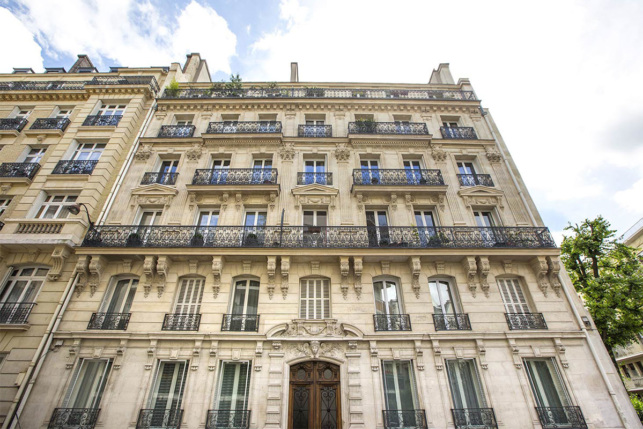
Typical façade in Haussmannian Paris

Upon entering the building, the stairway in the anteroom provides admission to the different levels. The standard programme of a Haussmannian building includes an interior courtyard, providing a source of fresh air and natural light
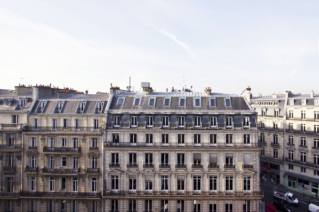
View of the Avenue de l'Opéra. The Haussmannian breakthrough was one of the major projects of the Second Empire in Paris
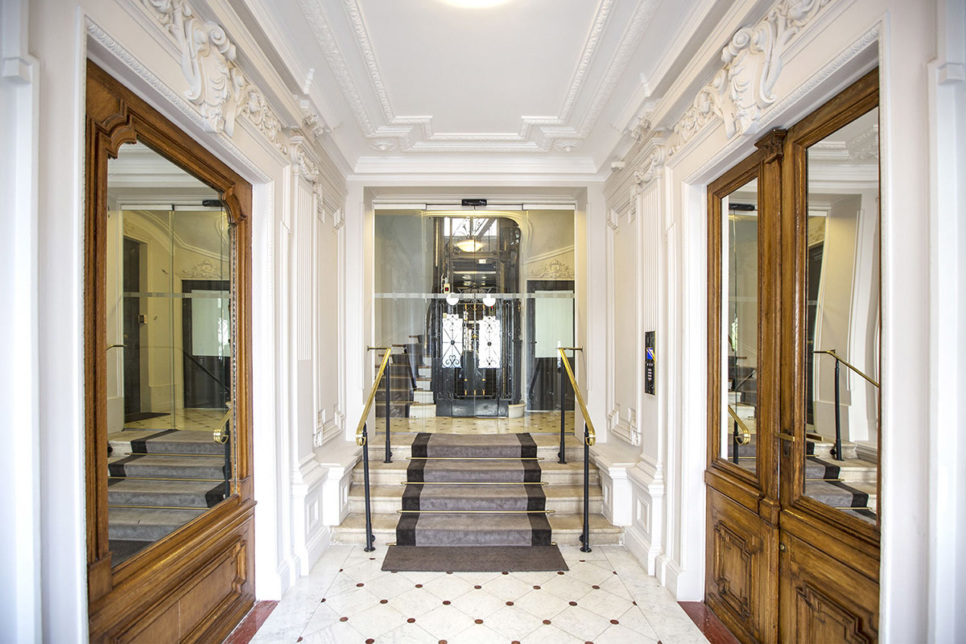
The alpine wooden doors of this building archway open onto a typical Haussmannian-style hallway. The ledges, mouldings and coving grade an aesthetic, harmonious ensemble
The new reference in modernity
Between 1853 and 1870, to decorate the 175 kilometres of roads that at present sliced through Paris, Baron Haussmann created a resolutely disruptive architectural style. The private townhouses, the last remains of the 18th century, were gone. In their place, investment properties for hire, fostering a more various society. Divided into lots, these buildings contained apartments spread out over the 5 or six floors (depending on the width of the road, buildings varied from 12 to 20 metres in acme). Every flooring represented a different social course. On the starting time flooring — often referred to as the mezzanine floor — were the merchants, who owned the stores on the footing floor. To respect the façade's symmetry, the windows are not as high in that location as on the other floors. Since the entryway is high, the windows but in a higher place demand to be smaller, to create a balance. Ceiling heights are a maximum of 2.half-dozen metres high, compared to 3.2 metres on the second ("piano nobile") flooring, reserved for the wealthy. Ceilings are lower the college you climb. The prestigiousness decreases from bottom to meridian. The third and fourth floors are identical, commonly for the middle classes. The fifth floors were set back, ordinarily housing the more than modest social classes. The pleasance of the little balcony running along the length of the apartment made up for having to climb to the pinnacle of the stairs, and it also embellished the façade. The sixth or top floor is where the "chambres de bonnes" were, for the servants. With lower ceilings and congenital under the eaves, the just access was by the dorsum stairs.
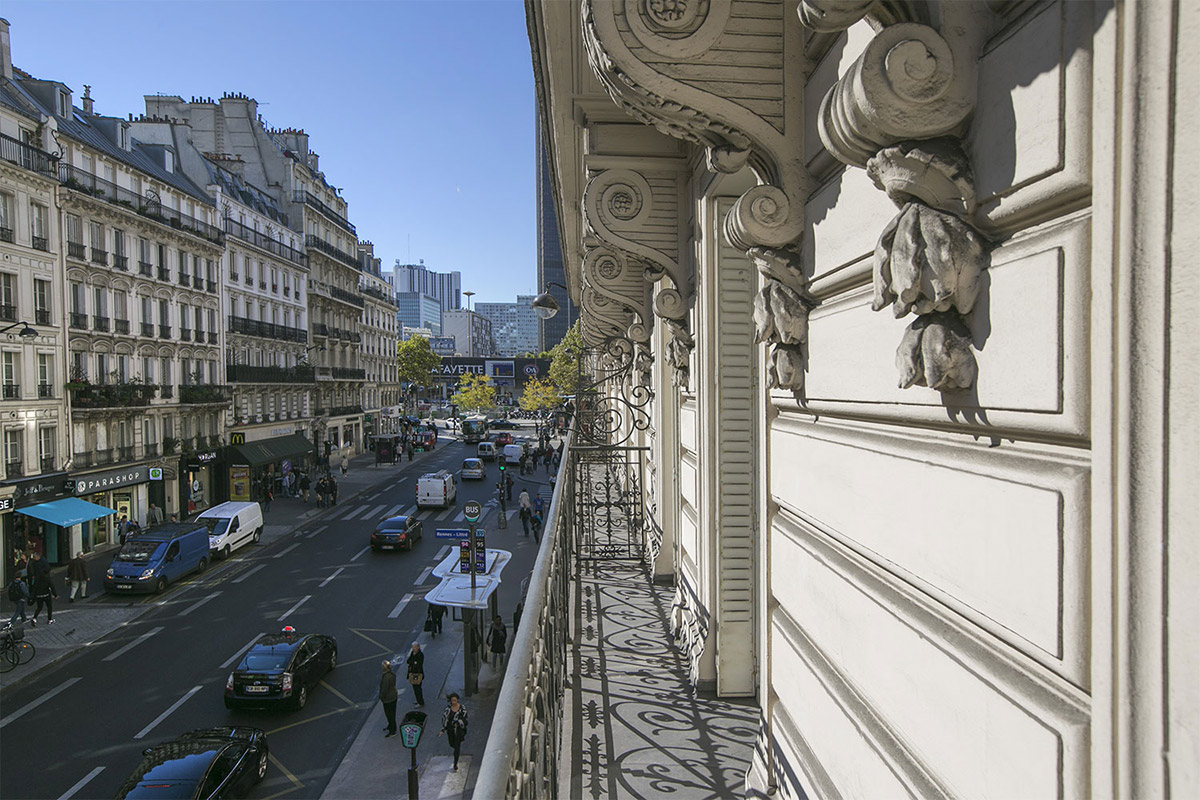
A dramatic, but uniform, façade
Haussmannian façades had a strict design in order to evidence the social status of each flooring, and also so that their perspective was in continuity. The ground floor and the mezzanine level are often marked with deep striated grooves that emphasise the base of the edifice. Between these grooves, there were "bossages" that were more or less finely detailed, or else columns to add together to the decoration. The second floor is the focus betoken. Wrought fe on the prestigious balcony and railings and richly decorated windowframes were role of the features designed to call attention to the piano nobile.
The ornaments are less visible on the tertiary and quaternary floors. The balcony railings on the fifth floor are much less detailed than those on the prestigious balconies.
On the street side, the façades feature cutting stone from the quarries of Saint-Maximin in the Oise region or Petit-Montrouge in the 14th arrondissement. On the courtyard side, lesser quality stone was used for the gable walls.
A new art de vivre emerges
Narrow, dark residences were now a thing of the past. Haussmannian buildings were not very deep (on average betwixt vii and 13 metres), and had courtyards or small yards, and they often had bright, dual-attribute apartments with big windows. Built in blocks, all fastened to each other, these adjoining buildings where at that place was minimal energy loss were extremely heat efficient. With mod conveniences, the apartments were connected to the sewage arrangement and the h2o distribution network, equipped with a kitchen, which generally disregarded the courtyard, with shuttered larders. They often opened onto a big entrance gallery that was called the "vestibule".
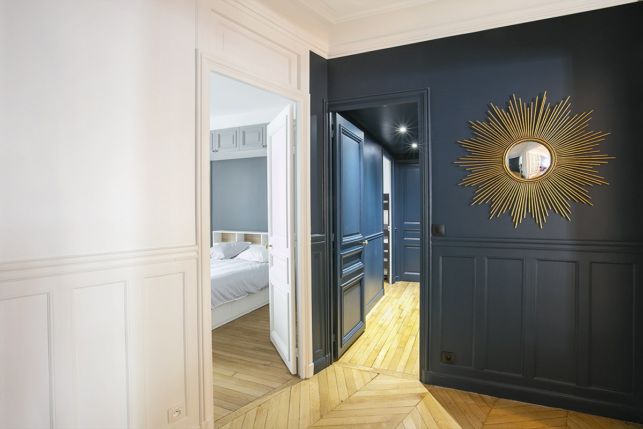
Inside the apartment, the anteroom opens onto the main rooms
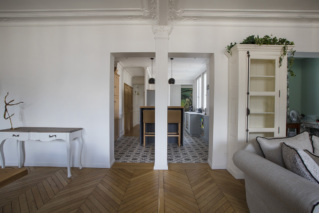
Furnished flat with one sleeping accommodation on the 2nd "pianoforte nobile" floor in a Haussmannian-style building
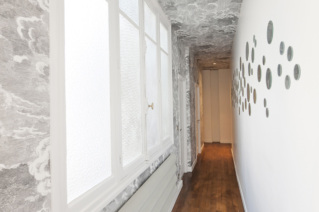
Another typical feature in a Haussmannian-style apartment is the layout of rooms along a corridor
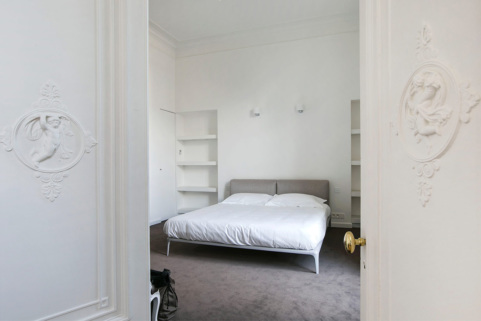
Bedrooms in Haussmannian buildings are more often than not spacious
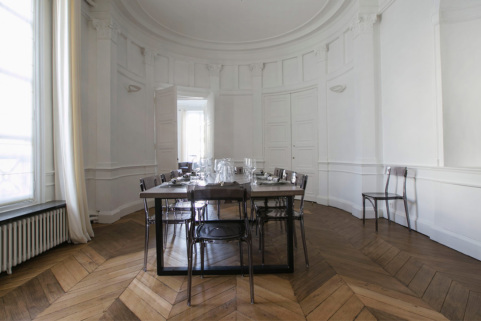
Haussmannian elegance: noble materials, high ceilings, mouldings, etc.
All of the rooms in the apartment are accessed via a long corridor, which are all in a row and look onto the street. The well-nigh luxurious apartments also have reception rooms. The kitchen is more often than not accessed from a back stairway.
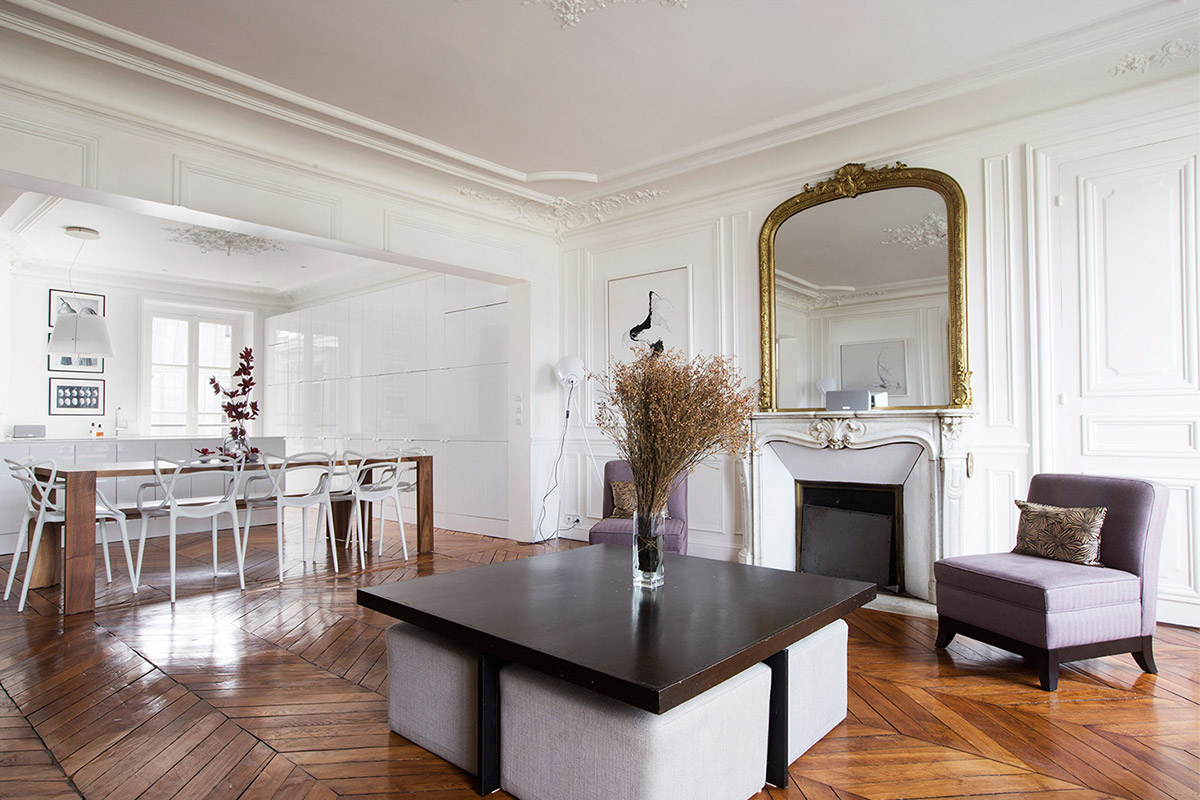
The discreet charm of the conservative flat
Bright rooms, wooden floors, fireplaces and fine mouldings are just some of the attractive features that were and so adored by all those who once dreamed of living in a Haussmannian apartment. With the exception of the kitchen and water closets, the floors were all made of wood. With herringbone, brick pattern or "parquet de Versailles" motifs, the wooden floors create warmth and adorn the space. The mouldings, cornices and rose ornaments, which varied in design depending on the flat's level of continuing and floor, accentuate and highlight the walls and ceilings. The woods panelling on the walls adds the final bear upon to this exquisitely refined style.
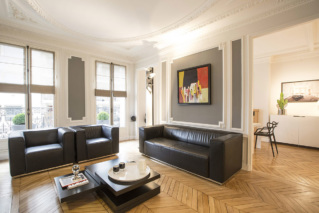
The lighting inside Haussmannian apartments is an important detail, so that the moulding motifs tin be fully appreciated, likewise as the oval ceiling with cornices, every bit seen here. Furnished apartment with long balustrade, Neuilly-sur-Seine
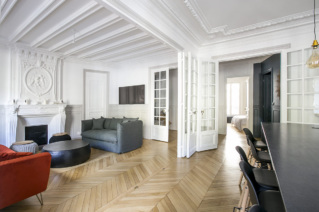
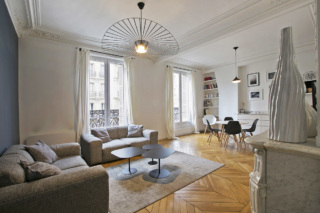
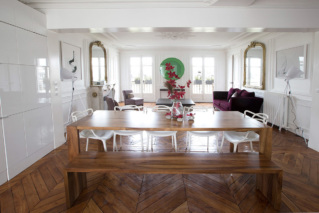
The dining room and living room are an extension of the kitchen. The removal of partition walls is common during the renovation of Haussmannian apartments. A loftier-finish furnished rental on Boulevard Voltaire
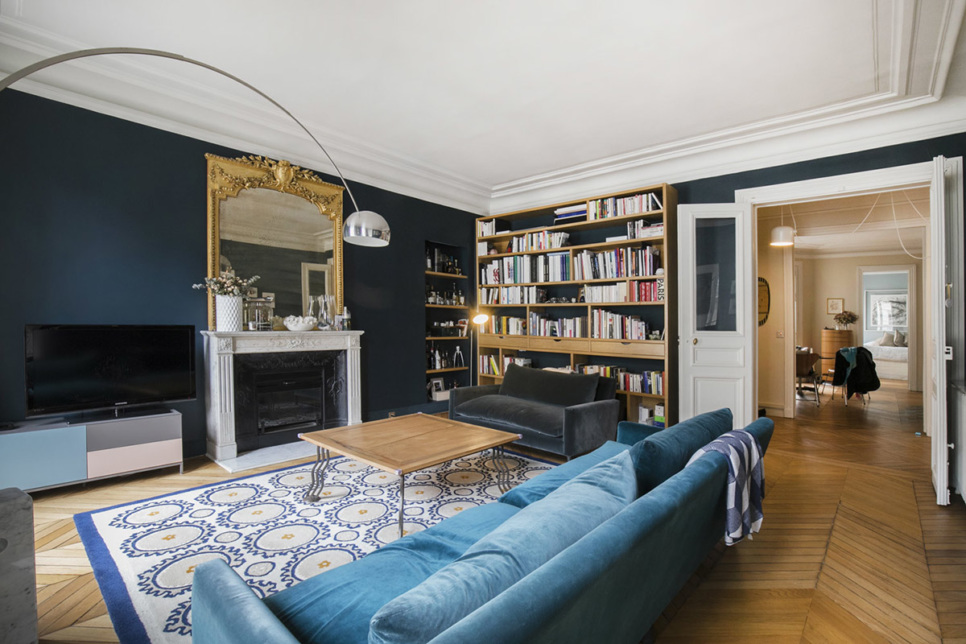
Continually reinvented, the Haussmannian manner can be tailored to every wish
To adapt to modern tastes, the room layout tin be rearranged into daytime and night-time spaces. The inner space tin can be redesigned past removing or moving the partition walls. Wooden floors and mouldings are easily restored, and walls painted with bold colours play on contrast. The kitchen comes out from behind the scenes, joining the living room to bring the living spaces together into a single surface area. Add a walk-in wardrobe or a shower — they'll work magic. The Haussmannian manner is a source of inspiration to the big names in interior pattern, and sparks ambition in amateur designers. The blend of onetime and new works wonderfully. The perfect proportions and well-designed balance of the Haussmannian style is a delight to bring up to appointment with modern trends, once you respect the golden dominion: contrast and juxtapose styles, without erasing them or blunting them.
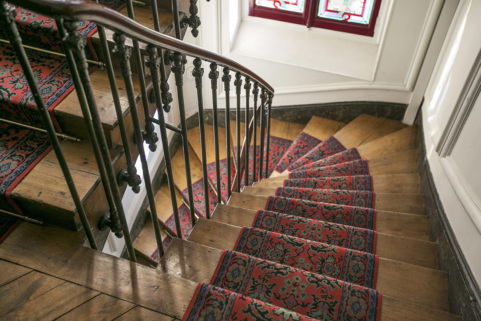
In Haussmannian buildings, a sure social hierarchy is at play. When they were designed, the lower floors were kept for the elite, whereas the upper floors were left to the lower-form families
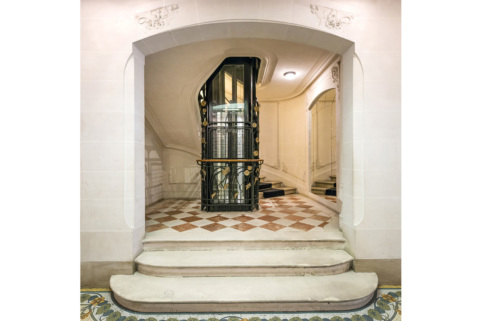
With the invention of the lift, apartments on the upper floors are now very sought-afterward
When lifts were introduced in the early on 20th century, the hierarchy of the floors was reversed. At present, the 5th and 6th floors are the almost sought-after. Having an unobstructed view of the rooftops of Paris and a clear horizon are advantages that don't have a price.
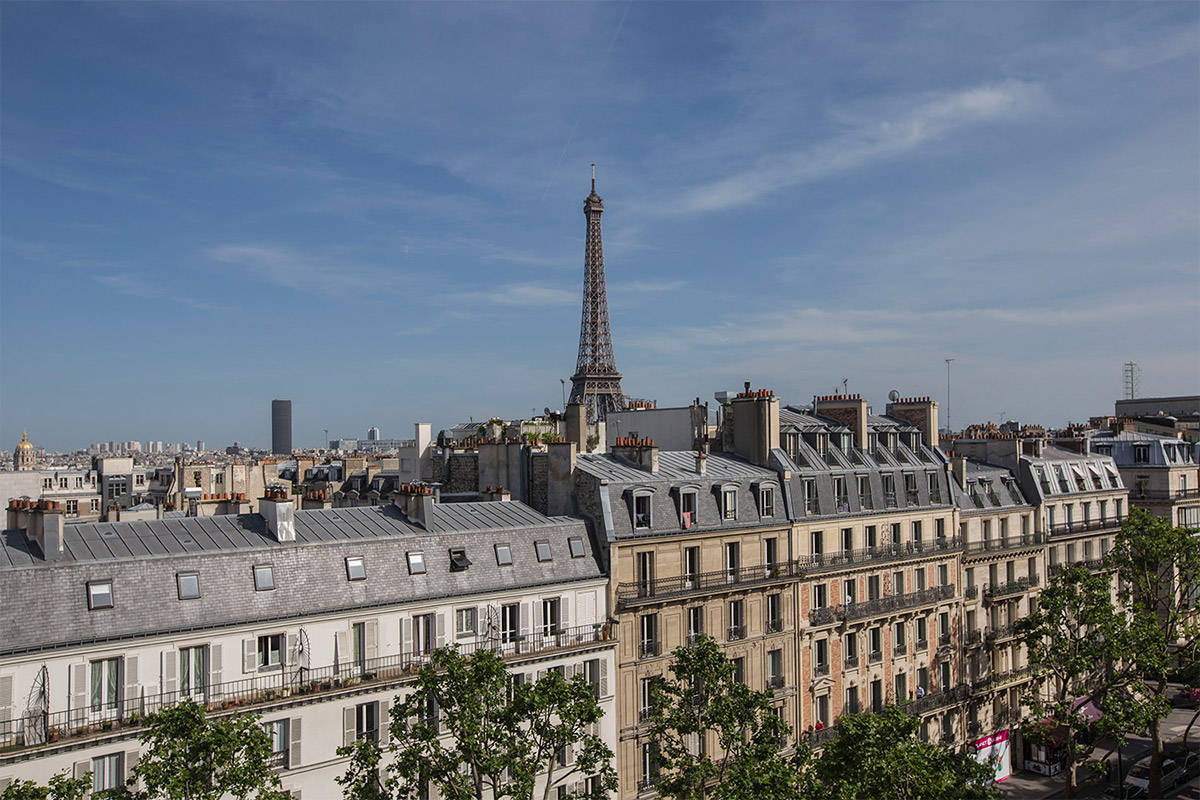
Source: https://www.book-a-flat.com/magazine/en/haussmannian-apartment-in-paris
0 Response to "What Were the Parisian Standards for Floor Space Height Gallery for Art Studios?"
Post a Comment